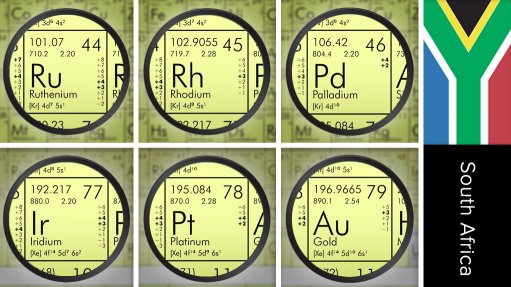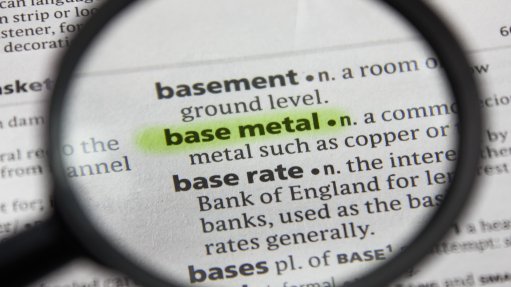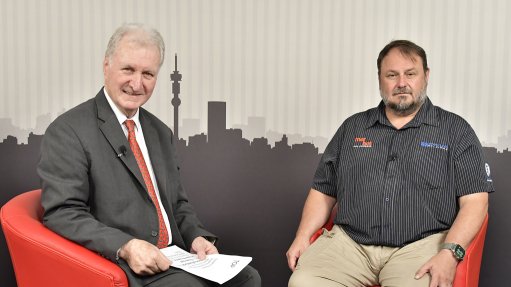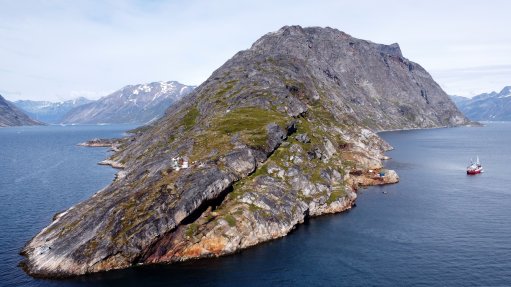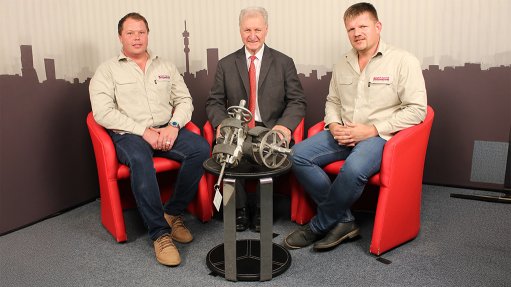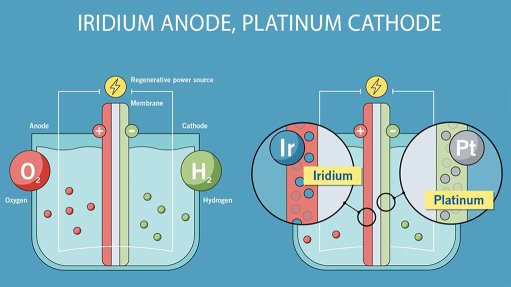South Africa’s largest wheeling project celebrates official commissioning

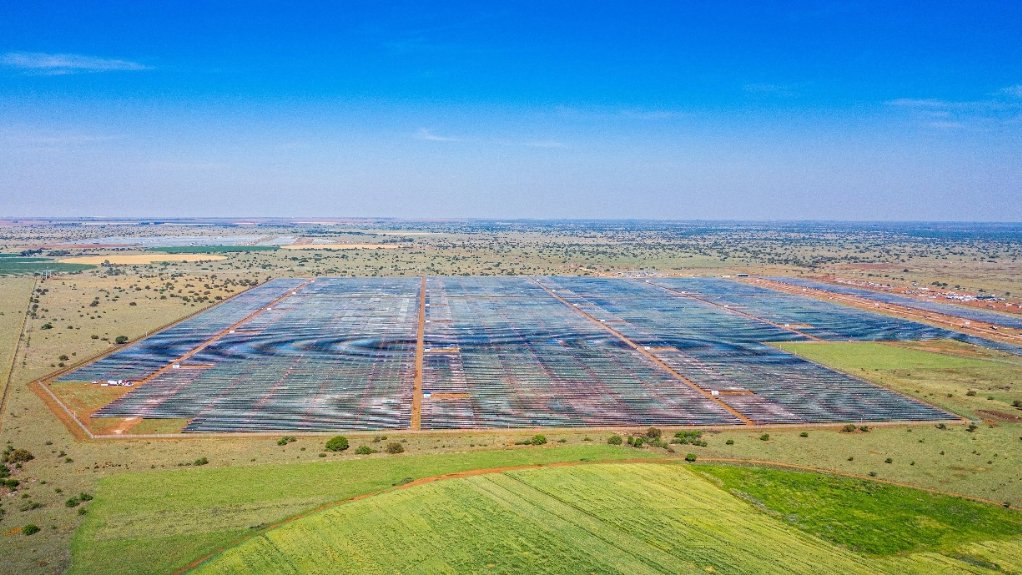
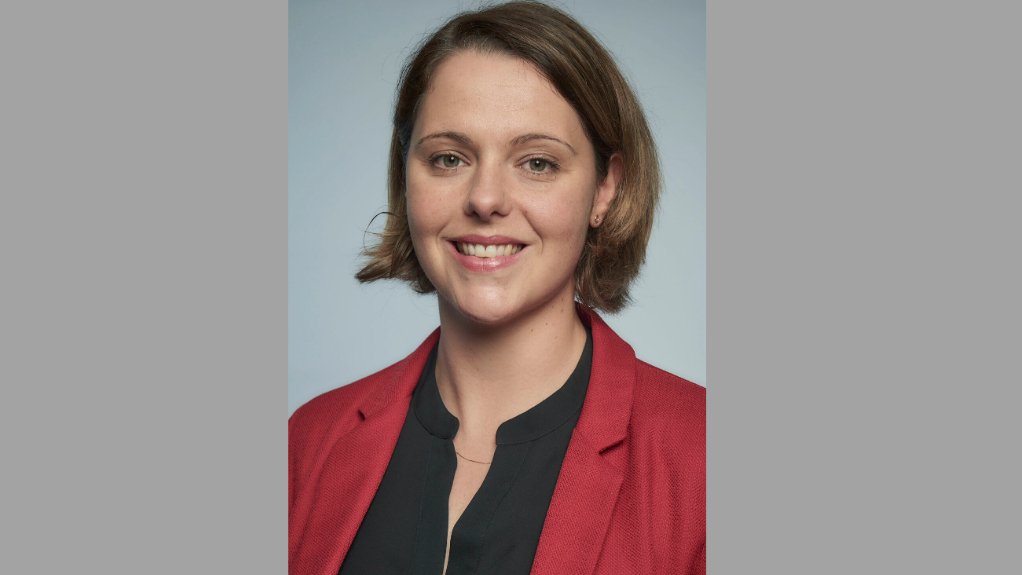

Selemela solar park
Sola Assets MD Katherine Persson
Tronox South Africa MD Mpho Mothoa
Vertically-integrated renewable-energy solutions provider the Sola Group has celebrated the official commissioning of South Africa’s largest operational wheeling project, which will add 256 MW of renewables capacity to the national grid to power mineral sands miner Tronox Mineral Sands’ operations in the country.
Speaking to Engineering News and Mining Weekly in an exclusive interview prior to the launch, Sola Assets MD Katherine Persson explained that the wheeling project encompasses two solar PV projects, with capacities of 126 MW and 130 MW, respectively, outside Lichtenburg in the North West.
Sola recently completed building the PV plant and now operates them.
The projects will provide renewable energy to Tronox’s operations through the Eskom transmission network, under a wheeling agreement.
Although the projects are located in the North West, energy will be transmitted to five of Tronox’s sites – three on the West Coast and two in KwaZulu-Natal.
Persson said these were among the first big renewables projects to be built outside of the Northern Cape, which was typically considered to be the best location for solar energy.
“Since grid capacity became constrained in the Northern Cape, we’ve moved to the next best areas,” she pointed out, highlighting that the location benefits from good solar radiation, suitable land and available grid connection.
The solar PV plants comprise 390 073 bifacial solar modules housed on a single-axis tracking system, covering just over 430 ha of land and generating 593 721 MWh/y of energy.
Engineering, procurement and construction work was executed by a WBHO and Sola Build joint venture. Sola Build performed the design, engineering, procurement, and commissioning services, and WBHO performed the construction.
Tronox South Africa MD Mpho Mothoa said the projects would cover about 40% of Tronox South Africa’s power requirements.
This wheeling arrangement is differentiated from a traditional behind-the-meter or rooftop project, where the electrons generated are used directly by the user. Rather, this arrangement entails a financial transaction where the electrons created by the facility go into the national grid and are then used by the sites on the other side from the grid, and there is then a reconciliation process on a monthly basis.
“This allows us to locate the renewable-energy generator in an area which is optimal and most suitable for that technology, and then still be able to support a buyer with facilities located in a different area,” Persson noted.
The current wheeling arrangement entails Tronox being the sole receiver of the energy; however, Mothoa pointed out that surrounding communities would also benefit indirectly, as they would have more access to coal-based grid power, with the energy-intensive company reducing its reliance on this.
Tronox was planning to eventually source 100% of its energy requirements from renewable sources, and this was the first step in its journey to becoming carbon neutral, Mothoa averred.
He also commended the strong, transparent working relationship with Sola to deliver the project, with this to be used as a baseline as the company pursues its renewable-energy needs further.
Persson echoed these sentiments, adding that strong partnerships with Tronox and other stakeholders were key to delivering projects of these sizes under a new regulatory regime.
Moreover, this was pivotal to managing challenges, including liaising closely with Eskom to mitigate delays in the project’s grid connection, she added.
Sola was awarded the project in the second half of 2021. The company reached financial close less than a year later, concluding the first major public-private partnership (PPP) of this kind, at just under R4-billion of financing.
From financial close, it took about 18-and-a-half months to build the two solar PV plants, and the projects became operational in March and April of this year.
The celebratory launch event was held off until after the country’s national elections. Persson said the event presented an opportunity to welcome all key stakeholders and partners to the project to celebrate the milestone of larger projects being commissioned – with these being the first two large projects to become operational since the National Energy Regulator of South Africa (Nersa) lifted the licence-exemption cap; and of the PPP succeeding.
Speaking at the official ceremony, Sola Commercial MD Jonanthan Skeen told guests that the project symbolised a significant milestone for the delivery of energy in South Africa.
“Today is about celebrating the milestone reached when a project of this size is officially commissioned. These are the first projects of this size that have been commissioned since the licensing cap was lifted. It also symbolises an example of public-private partnerships working in unison to deliver results that benefit all of South Africa.”
ESG STRIDES
Persson said the projects would produce just over 600 000 MWh of green renewable-energy yearly, the equivalent of displacing about 420 000 t/y of CO2 emissions.
“It’s directly replacing electricity that Tronox would have bought from Eskom, which is largely coal-powered electricity. There's obviously a large carbon and environmental benefit there, and we’re also doing a lot of work to make sure that the environmental conditions on site are protected and retained and improved where possible,” she stressed.
Mothoa highlighted that wheeled electricity would reduce Tronox’s Scope 2 emissions in the country by about 38%.
He emphasised the significance of the company switching from coal-based power to renewable energy.
“It is just one way of Tronox implementing innovative technologies and best practices across all its operation sites to ensure that we protect our land, water, air and ecosystems so that we can operate more sustainably,” he said.
Persson highlighted that the project was 100%-South African and 52% black-owned, and was financed fully by local banks.
“The project’s local content, in terms of the spend in South Africa, is about 40% of the overall project cost. In addition to that, specifically in the local area – in the town of Lichtenberg and the surrounding communities – we’ve spent over R200-million on services and goods.”
She lauded the support that had gone into promoting local economic activities and the development of new and expansion of existing small and medium-sized enterprises (SMEs) in the local area.
Of the 1 200 people that were employed at peak during the construction period, 936 were locals, either hired directly in the project construction team or contracted by local SMEs.
Of the local workforce, 20% were female employees, and just under 60% were youth employees.
“We’ve put a lot of effort into developing these local companies – we’ve put 305 people from small local businesses through a specially designed small, medium-sized and microenterprises training programme to develop those companies and ensure they were able to participate in this project, but also in future projects in the area,” Persson pointed out.
Up to 30 people were employed during the construction phase, with some of those who were employed and upskilled during the construction phase able to secure permanent jobs.
To ensure the projects’ long-term sustainability and success, Sola also set up a stakeholder engagement structure with the local community to ensure effective and efficient constructive communication with all key stakeholders including representatives from provincial and local structures.
Mothoa also highlighted the corporate social investment (CSI) facet of the project. This entailed analysing the pressing socioeconomic needs of the communities surrounding the facility and implementing CSI initiatives with relevant stakeholders to address some of these.
Article Enquiry
Email Article
Save Article
Feedback
To advertise email advertising@creamermedia.co.za or click here
Press Office
Announcements
What's On
Subscribe to improve your user experience...
Option 1 (equivalent of R125 a month):
Receive a weekly copy of Creamer Media's Engineering News & Mining Weekly magazine
(print copy for those in South Africa and e-magazine for those outside of South Africa)
Receive daily email newsletters
Access to full search results
Access archive of magazine back copies
Access to Projects in Progress
Access to ONE Research Report of your choice in PDF format
Option 2 (equivalent of R375 a month):
All benefits from Option 1
PLUS
Access to Creamer Media's Research Channel Africa for ALL Research Reports, in PDF format, on various industrial and mining sectors
including Electricity; Water; Energy Transition; Hydrogen; Roads, Rail and Ports; Coal; Gold; Platinum; Battery Metals; etc.
Already a subscriber?
Forgotten your password?
Receive weekly copy of Creamer Media's Engineering News & Mining Weekly magazine (print copy for those in South Africa and e-magazine for those outside of South Africa)
➕
Recieve daily email newsletters
➕
Access to full search results
➕
Access archive of magazine back copies
➕
Access to Projects in Progress
➕
Access to ONE Research Report of your choice in PDF format
RESEARCH CHANNEL AFRICA
R4500 (equivalent of R375 a month)
SUBSCRIBEAll benefits from Option 1
➕
Access to Creamer Media's Research Channel Africa for ALL Research Reports on various industrial and mining sectors, in PDF format, including on:
Electricity
➕
Water
➕
Energy Transition
➕
Hydrogen
➕
Roads, Rail and Ports
➕
Coal
➕
Gold
➕
Platinum
➕
Battery Metals
➕
etc.
Receive all benefits from Option 1 or Option 2 delivered to numerous people at your company
➕
Multiple User names and Passwords for simultaneous log-ins
➕
Intranet integration access to all in your organisation









